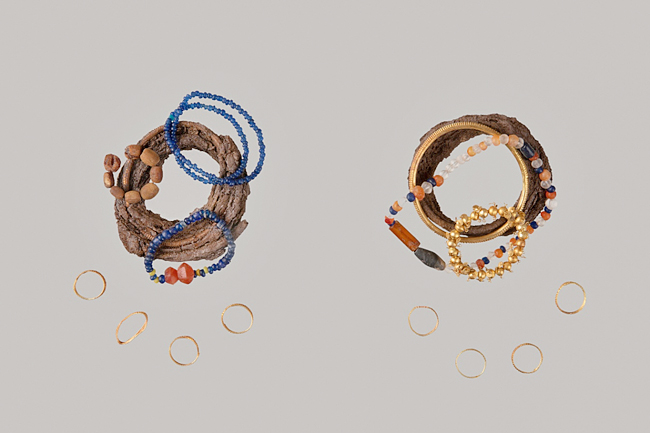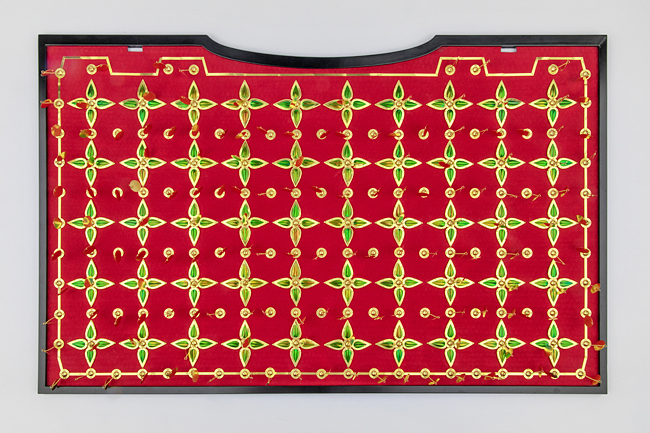THE KOREA HERALD – Remnants of a pair of fabric mudguards decorated with flower petals made with jewel beetle wings were discovered at Jjoksaem Tomb in Gyeongju, North Gyeongsang Province, the Cultural Heritage Administration (CHA) announced at a press conference at the Gyeongju Jjoksaem site yesterday.
A total of 780 artefacts were unearthed along with the mudguards during the investigation of the wooden chamber tomb piled with stones and earth mound, a type of tomb specific to the Silla Kingdom. The artefacts included fragmented remnants of burial accessories, such as a gilt-bronze crown, necklace, bracelets, a belt, shoes, earthenware and textiles.
Researchers have determined these ornaments to have been created for a young fifth-century princess. The size of the relics suggests that the princess was approximately 130 cm tall and around 10 years old.
“While previous discoveries of Silla mudguards primarily featured cheonma (a winged horse-like creature), we are delighted to introduce a new type of mudguard with jewel beetle wings found in Jjoksaem Tomb,” head of the CHA, Choi Eung-chon said at the conference. The nearly 10-year investigation that began in 2014 and ended last month successfully restored the complete structure of the wooden chamber tomb and stone mound, according to the CHA.
In 2020, hundreds of gilt-bronze ornaments decorated with jewel beetle wings were discovered near the head of the deceased, where burial goods were left. Research determined that these ornaments were part of the mudguard, a bamboo fabric adorned with the wings of jewel beetles.




The mudguard, measuring 80 cm in width and 50 cm in height, consists of a woven bamboo outer frame covered with hemp cloth on the inside along with three layers of hemp cloth and silk fabric on the outside.
Gilt-bronze leaf-shaped decorations featuring the wings of jewel beetles adorned the fabric, along with gilt-bronze hanging accessories and thin, flat gilt-bronze plates. These leaf-shaped ornaments were meticulously crafted by overlapping two wings of jewel beetles on a gilt-bronze plate, with additional plates attached to the edges for decorative purposes.
The mudguard features 50 flower patterns created by combining four leaf-shaped ornaments with a hanging accessory, showcasing the exceptional craftsmanship of Silla.
“We still have to figure out the historical implications of the Silla jewel beetle decorations and any potential connections they may have with the princess,” a senior researcher at the National Research Institute of Cultural Heritage said.
In addition, a trace of fabric was found near a gilt-bronze crown, covering a bundle of organic matter identified as the princess’s hair. The wrapping of the fabric indicated a hairstyle of the time, where several strands of hair were tied together. Fabrics used for gilt-bronze relics were also identified, revealing a weaving technique known as samsaikkyeonggeum which involves three colours of thread to create intricate patterns.
Furthermore, leather, silk and wool fabrics made of goat hair were found in gilt-bronze shoes, displaying vibrant colours visible through the openwork, providing valuable evidence for textile research. – Kim Hae-yeon






